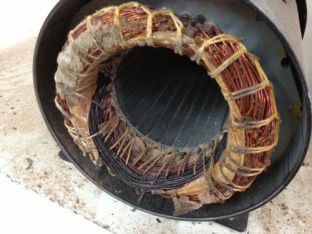 Electric Chain Hoists are generally very robust items of lifting machinery, designed to operate in an industrial environment. However, this doesn’t mean that they should be poorly maintained or misused. Such treatment will lead to breakdowns and deterioration of equipment condition rapidly. Just like any other tool or machine, you should care for them carefully.
Electric Chain Hoists are generally very robust items of lifting machinery, designed to operate in an industrial environment. However, this doesn’t mean that they should be poorly maintained or misused. Such treatment will lead to breakdowns and deterioration of equipment condition rapidly. Just like any other tool or machine, you should care for them carefully.
Inching, what is it and how does it affect my hoist’s life span?
Often is the case with motorised chain hoists is that the user (usually due to inadequate training or failure to read operational instructions) will rig up the hoist and perform a lift, then, as the load is almost in place, in order to make small adjustments the operator will briefly continuously click the directional button which causes the hoist to only move a tiny amount as desired- less often is the case with a dual speed hoist (more about that below). This is known as ‘Inching’ or ‘Blipping’, although you get to make more precise operations this does have a negative effect on the life of the hoist motor. By inching the hoist you are constantly turning on and off the hoist motor, every time you click it is classed as a new start, this, in turn, draws more current known as ‘startup current’ which comes with heat, the more you inch, the more heat you pull into the motor which if performed often or for prolonged periods can cause the hoist or travel motor windings to burn out.
Although brief and occasional inching isn’t particularly frowned upon and in some cases cannot be avoided, this should not have a detrimental impact on the lifespan of the hoist motor, it is situations where startup current is frequently activated by inching that will shorten the lifespan of a motor. This can result in a very, very expensive repair bill, often is the case that changing a motor is beyond economical due to the simple fact that you are replacing the most expensive component in a hoist with the most intense refitting procedure- for example, some hoist bodies require a heat treatment to remove the motor as they are so tightly fitted.
Solutions to the problem:
Bar investing in a motor manufacturing plant, there are some easier and more cost effective solutions believe it or not! The only downside to these are that the solutions need to be considered when choosing the specification of a hoist, sadly it is usually complex and costly to implement the following to an existing hoist. Firstly, the most cost effective of the two is dual speed operation as I mentioned briefly above. Dual speed operation provides the user with two speeds of lifting, one slow ‘creeping speed and one fast ‘normal’ speed. Instead of inching at 4m/min the user can slightly let off the double pressure push button to activate the slow speed at 1m/min (speed figures are not the same on every hoist, but this is a common combination) this permits very small and slow movement instead of inching the hoist into place. The unfortunate side to this is that it is only available on three phase hoists, not in 230v or 110v models. Sometimes the operator will need to be even more precise and dual speed operation will still not suffice. This then leads to the second and more expensive option; frequency inverter control. In a nutshell a frequency inverter device when fitted to a hoist allows the fitter to programme it to control at really precise speeds which deliver a very smooth transition from speed to speed while giving super accurate positioning of loads, this feature is less common with standard Electric Chain Hoists and more common in wire rope hoist crane systems.
